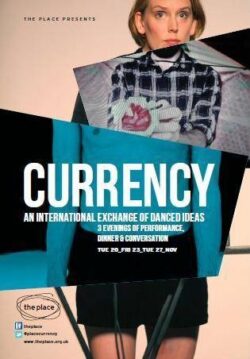- What We Do
- Understanding your audience
- Engaging new audiences
- Designing experiences
- Building loyalty
 Case studies
Case studiesThe Place
Using Morris Hargreaves McIntyre’s Culture Segments insight, The Place has been able to transform its strategic planning processes, shape its offer, design bespoke experiences and tansmit messages that resonate with key audiences.
I expected MHM to be creative, provocative and brilliant, and they were. What I valued most was how much care they took to understand our organisation. It was clear that they were as invested in our success as we were
Tim Wood, Director of Communications, The Place
As the UK’s premier centre for contemporary dance, located in central London, minutes from three large stations and within reach of more than 9 million people The Place felt it should be able to grow its audiences. In 2012 The Place commissioned MHM to undertake a revolutionary plan, placing audiences at the centre of their strategic planning, giving the whole organisation a new way of thinking about their programming, venue and audiences.
The Place does not have resources for large broadcast campaigns to stand out in the market place. But previous experience had made it clear that other existing market segmentation techniques (those based on demographics or buying history, for example) weren’t informative enough because they didn’t get to the heart of why a particular audience might engage with their offer.
Using our Culture Segmentation system we were able to identify priority segments for the Place to focus their efforts.

The market
Our Analysis of Audience Atlas UK of The Place’s primary catchment area (London, the South East and East of England) showed substantial untapped potential for The Place. There are more than 2.75 million people having attended a contemporary dance event in the last three years.
Segment profiling
Comparing the Culture Segments profile of The Place’s existing bookers with that of the available market showed us in which segments The Place was excelling, and in which they were under penetrating.
Almost half of The Place’s bookers were in the Essence segment who are in little need of convincing (with 12 out of 14 staff also in Essence, had The Place fallen into the trap of marketing for ‘people like them’?).
However the contemporary dance market holds significant untapped potential within the Affirmation segment and considerable further room to grow in the already well-represented Expression segment.
Growth segments
The dominant Essence segment are highly active, programme-driven and visiting a wide range of venues for the range of work they wish to see. Stimulation segment are also culturally promiscuous, over-indexing in the majority of other venues tested.
Essence remains a priority — dominating the current audience — but those in Essence and Stimulation are not loyal; they attend for the event, and are less likely to develop a deep, lasting relationship with The Place.
In contrast those in the Affirmation and Expression segments are less likely to stray once they’ve found the venue(s) that suits their needs and resonates with their values. While fewer of The Place’s current bookers were in the Affirmation and Expression segments, our research found them most likely of all to be loyal to The Place, specifically choosing to see things because they are on at The Place.
Segment Strategies
The plan is now to continue to nurture Essence but to build more audiences within Affirmation and Expression.
By focusing efforts on brand-aligned Expression and loyal Affirmation, The Place has begun to exploit untapped potential, as well as carve out a distinct position in the market place. By understanding the needs of Essence, they can also continue to look after the dominant majority of their current audience.

Culture Segments in Action – Currency

The Place is now taking entirely new and holistic approach to programming and packaging experiences.
For Affirmation the priority is in providing a supportive introduction and giving equal emphasis to the enjoyable social element as the work that takes place on the stage.
For Expression, more opportunities are being created to engage in the creative process and to be part of the debate. The first major joint programming and marketing initiative in response to this research was Currency.
Our marketing activity is diversifying accordingly. As well as experimenting with different messaging, we are trialling new educational and contextual events to add to the audience experience – all designed to meet the needs of these segments.
Tim Wood, Communications Director, The Place
Currency was therefore promoted as “an international exchange of ideas” and “three evenings of performance, dinner and conversation”.
The ticket price included dinner in The Place’s café and a short pre-show discussion in the form of a ‘blind date’ between some of the organisation’s resident Work Place artists and their European peers. This included a provocation for discussion over dinner and during the interval and was deliberately crafted to dismantle the ‘code’ around dance making the whole conversation more inclusive, helpful and enjoyable. Giving people the confidence to have their own individual response to the work.
This offers a supportive introduction for Affirmation – as well as increasing the value of the experience and ensuring the balance between sociable fun and gaining new a new perspective.
Performances were surrounded by opportunities to interact with the artists and other audience members, to discuss and reflect on the work satisfying Expression’s needs to engage with the creative process, hear from artists and creatives for shared experiences and to be a part of a bigger discussion.
Messages were designed to resonate with each of the target segments, articulating a reasonto engage for each of:
Expression – “Food and thought at The Place”
Affirmation – “Dinner and a show – with a difference”
Essence – “An international exchange of dance ideas”Impact
This insight has been helping The Place prioritise and plan developments based on how well they’re meeting the needs of their priority target segments – a virtuous circle of improvement. And is setting them on track for a three year strategy to increase audiences from 66% to 75% capacity.
- Early indicators show that initiatives have succeeded in bringing new audiences to The Place – 44% of Currency bookers were new to The Place (compared to previous seasons of international work which saw new bookers representing an average of below 20% of the audience.
- While newer audiences are yielding a lower income (new bookers across the autumn 2012 programme yielded on average 15% less per ticket than returning audiences), this is a long term strategy in engaging audiences who will be aligned to The Place’s offer and will be more pre-disposed to return and become loyal.
- Customer feedback has been strongly positive. 89% of new attenders for Currency rated their overall impression of the evening as “Excellent” or “Good”; 67% “definitely agree” that they would consider attending similar events in the future.
- Existing customers have also responded positively: 78% “definitely agree” or “mostly agree” that The Place should try new things to attract new audiences, and 94% said that they would recommend The Place to other people.
The organisation is benefiting a more strategic approach and a revolution of how the organisation thinks about its contextual programme. There is a renewed enthusiasm for reaching out to and targeted audiences across the organisation’s different departments. Culture Segments has provided a common language for talking about audiences and has been particularly helpful in identifying needs that are not necessary the same as the staff’s own.
Next steps – data tagging
The Place is implementing the Culture Segments TagTool online app; this will provide The Place with the capacity to direct bookers to a small, quick number of key questions including the Culture Segments Golden Questions. This enables The Place to segment bookers at a record level, monitoring what works best, where the greatest return on investment lies, who is responding, which messages resonate with which audience segments via which platforms. This means strategies can be adjusted and messaging changed dynamically. A campaign designed to reach Expression can be evaluated by whether an increased number of Expression are subsequently booking.
- Engaging new audiences
- Understanding your audience
